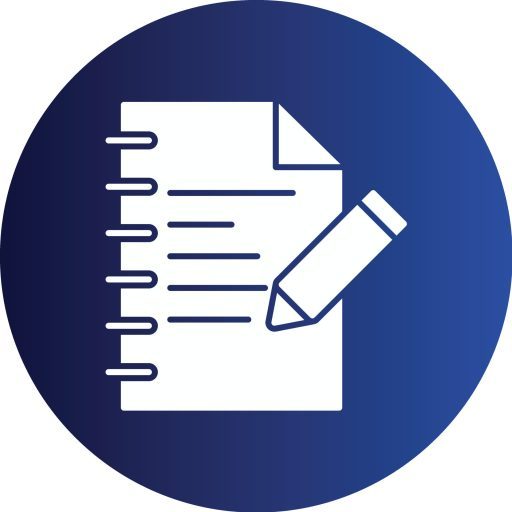Part 1: Exercise Instruction Video
Aim
The Exercise Instruction Video aims to demonstrate effective coaching and instructional skills through a 30-minute client training session with clear communication, appropriate exercise selection, correct technique, and the use of concise and motivating coaching cues. The session should demonstrate the ability to design and deliver evidence-based programs, apply training and periodisation principles, and use suitable coaching frameworks to instruct foundational movement skills safely. It should also show how exercises are adapted in response to client progress and feedback, focusing on client engagement, safety, and risk management throughout the session.
Task
Step 1: Session Preparation and Set-Up
Prepare and record a 30-minute coaching session with your client, ensuring the camera, your position, and the client’s position allow clear visibility of all exercises. Pay close attention to how you present yourself, deliver verbal instructions, and demonstrate movements. Use clear and concise coaching cues that prioritise safety, accuracy, and relevance to your client’s goals and ability. Select exercises that support those goals, and ensure your demonstrations are easy to follow. The session should reflect professional communication, effective instruction, and appropriate progression based on the client’s needs.
Step 2: Session Implementation
Begin the video by greeting your client, explaining the session plan, and obtaining verbal or informal written consent (e.g., a signed note). Clearly outline the purpose of the exercises and how they align with the client’s goals. Record a 30-minute session that demonstrates your coaching approach, focusing on the quality of instruction rather than completing full sets. Throughout the session, provide clear technical cues, actively coach the client through each movement, and adjust to ensure safety and understanding. The video should highlight your instructional clarity, use of effective demonstrations, and ability to motivate and engage the client.
Part 2: Written Client Guidance
Aim
The aim of the written client guidance is to assess your ability to communicate clearly and professionally, providing information that supports the client’s understanding and adherence to the exercise program.
Task
Following your Exercise Instruction Video session, you must provide your client with a 300-word written summary outlining the key points of the session. This should include the purpose of the session, a brief overview of the exercises performed, relevant safety considerations, and how the session supports the client’s goals. The language must be clear, simple, and professional, suitable for a client with no technical background.
Summary of Assessment Requirements
The Exercise Instruction Video and Written Client Guidance Assessment aims to evaluate a student’s ability to plan, deliver, and communicate an effective exercise session tailored to a client’s goals. The assessment is divided into two key components:
Part 1: Exercise Instruction Video
- Objective: Demonstrate professional coaching and instructional ability in a 30-minute training session.
- Key Pointers to Cover:
- Clear verbal and visual communication.
- Safe, evidence-based exercise selection.
- Proper technique demonstration and progression.
- Client engagement, motivation, and feedback adaptation.
- Risk management and safety awareness throughout the session.
Part 2: Written Client Guidance
- Objective: Provide a concise, professional 300-word written summary for the client after the session.
- Key Pointers to Cover:
- Session purpose and overview of exercises performed.
- Key safety considerations and modifications.
- How the exercises align with the client’s goals.
- Use of clear, non-technical language suitable for a client audience.
Academic Mentor’s Approach and Guidance Process
The academic mentor guided the student through a structured and supportive process, ensuring clarity and confidence in each stage of the assessment.
Step 1: Understanding Assessment Requirements
The mentor began by reviewing the assessment brief with the student, clarifying each component’s purpose and expectations. The mentor emphasized the need for both practical demonstration (video) and professional communication (written summary). Examples of effective session structures and coaching styles were discussed to help the student visualize the expected outcome.
Step 2: Planning and Preparation
Next, the mentor guided the student in designing an appropriate training plan aligned with the client’s goals. This included selecting exercises that were safe, progressive, and evidence-based. The mentor also advised on camera setup, frame positioning, and presentation skills to ensure professional video recording.
Step 3: Instructional Delivery and Coaching
During practice sessions, the mentor focused on improving the student’s communication and coaching cues ensuring they were clear, motivational, and technically accurate. The mentor encouraged the student to use simple language, demonstrate each movement confidently, and make real-time adjustments based on the client’s form and feedback. Emphasis was placed on client engagement and maintaining safety throughout.
Step 4: Written Client Guidance Development
After the video session, the mentor guided the student in drafting the written client summary, ensuring it was concise, well-structured, and free of technical jargon. The mentor reviewed the content for tone, clarity, and professional presentation. This stage reinforced the importance of client-centered communication and post-session support.
Step 5: Review and Feedback
Finally, the mentor conducted a detailed review of both components providing constructive feedback on the student’s delivery style, instructional techniques, and written communication. Minor refinements were made to enhance flow, professionalism, and alignment with assessment criteria.
Outcome and Learning Objectives Achieved
Through this guided process, the student successfully:
- Demonstrated the ability to plan and deliver a structured, safe, and client-focused exercise session.
- Applied effective communication and motivational coaching cues throughout the instruction.
- Showed understanding of risk management and technique correction.
- Developed skills in writing clear, client-friendly guidance to reinforce learning and adherence.
- Met the assessment’s core learning objectives, including:
- Application of training principles and coaching frameworks.
- Integration of evidence-based practice in exercise delivery.
- Enhancement of professional communication and instructional skills.

